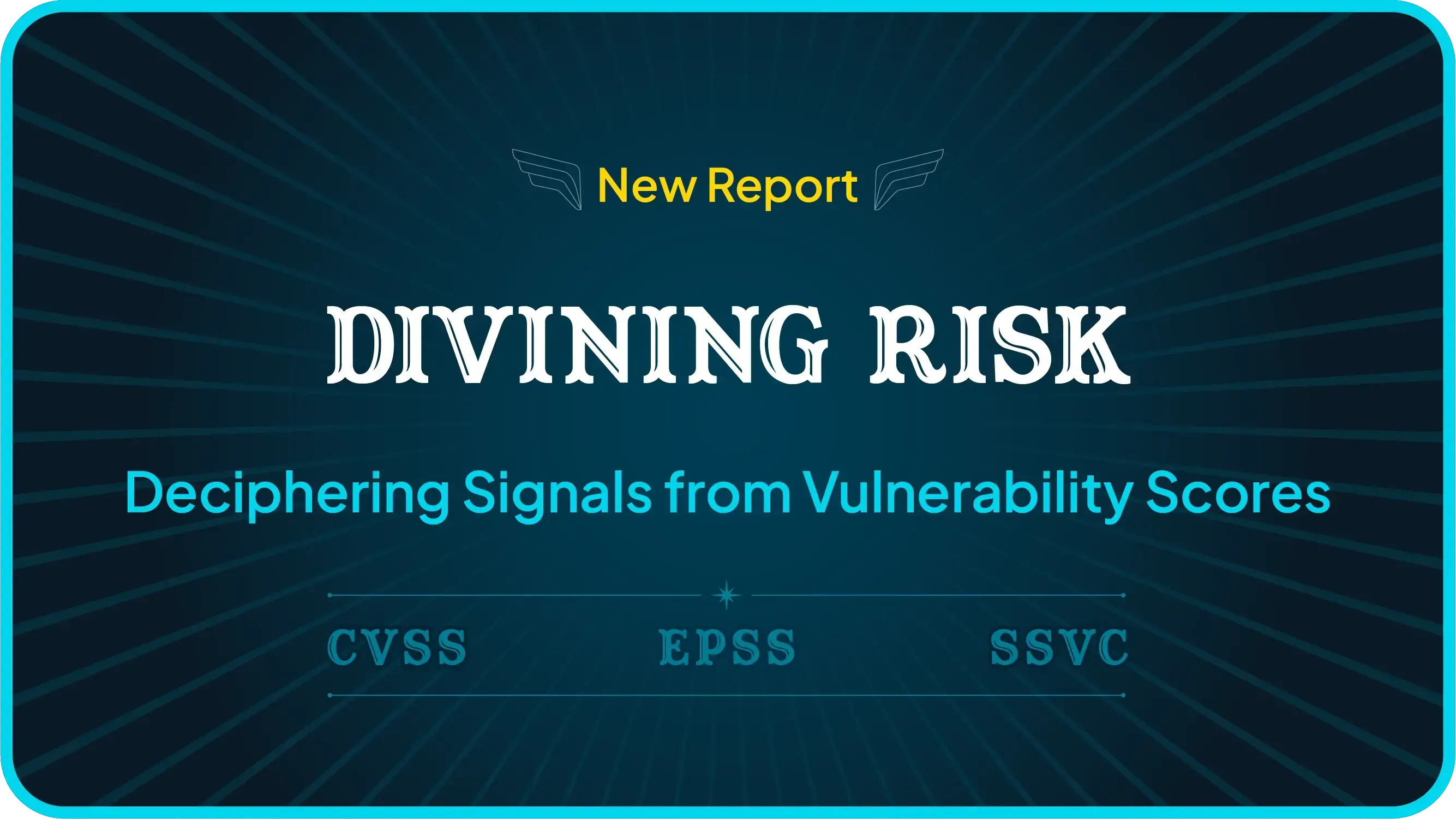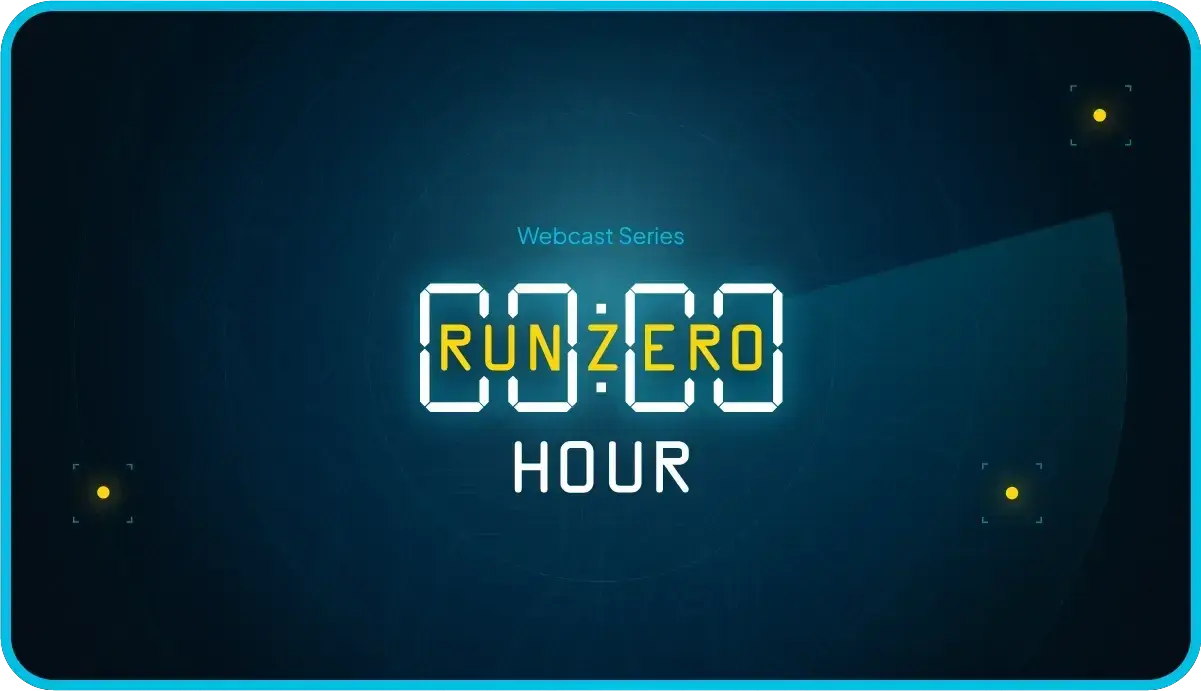At runZero, a physical office isn't what unites us – it's our mission that brings us together.
We are proud of the fact we are a 100% remote team, distributed across 10 states. From software engineers to product developers, we aim to help organizations keep their networks secure – all from the comfort of our own homes.
People often ask me why we chose to be a fully remote company from the beginning. As we look to grow, I wanted to take time to elaborate on why we made this choice, the benefits to our company and employees, and how we cultivate our culture without a shared office space.
Why remote-only was the right choice #
I joined runZero in late 2020, two years after our founder, HD Moore, started the company. We were in the middle of a pandemic, and our conversations quickly turned to the practicalities of running a startup remotely. Because the whole world was still working remotely due to the pandemic, opening an office just didn’t make sense at the time.
HD felt that he could run the engineering side of things remotely from Austin, TX, and he asked if I needed a sales office in Boston. With all the tools at our fingertips today, I knew I could accomplish most tasks remotely.
My perspective was that working in an office is only important for certain meetings and social interactions. It’s not required for individual, focused-work (unless you have a lot of people in your apartment and need a quiet place to work, but even then, there are other options to meet that need such as coworking spaces).
All that to say: my immediate instinct was runZero could run very well remotely.
Hybrid work is the worst of both worlds #
Hybrid usually means employees are in the office around 3 days a week. Employers usually allow people to have some level of freedom over the days they choose to be in the office, so they still get the flexibility from remote work. As a result, it’s difficult to get everyone at the office at the same time.
These hybrid models work in theory, but to me, they seem to bring out the worst parts of each working environment. You still feel isolated (a challenge of remote work), even though you are technically back in the office. You’re able to meet with your colleagues in-person, but never at the same time. So what’s the point?
Hybrid models are also not conducive to productive meetings. Trying to optimize an audio and video setup for in-person and remote meetings is an exercise in futility. One person is drawing on a whiteboard you can barely see, and another is struggling to hear what’s going on through the dreaded Polycom.
Meanwhile, if everyone is on a Zoom call, we can all hear and see each other simultaneously and clearly. Video-conferencing software has improved drastically over the last few years and video and audio quality is heads and tails above typical conferencing options, which allows for efficient and productive meetings.
On a personal level, this is how I prefer to work. I don’t have to sit in a car for two hours a day to get to an office and to run between different meeting rooms at different times. I can prepare healthy meals and pop in a load of laundry in between writing up strategic reports.
Beyond that, however, there are tangible benefits to the company itself that made our decision to become 100% remote an easy one.
Remote work attracts the best talent and gives us an edge over the competition #
As things slowly returned to normal in 2021, more companies began to ask employees to come back to the office. However, not all of them wanted to return.
We saw this as a competitive advantage for us. We offered a workplace that allowed for talented individuals to continue working independently, while also being part of a team that shared their values. The certainty that we were never going to ask people to come to an office was a big plus for a lot of people.
In turn, the talent pool we could choose from actually broadened. Now we could pick up people from companies that wanted employees to return when they didn’t want to. We weren’t restricted to a single city either. We could attract quality candidates nationwide and hire, onboard, and train them quickly and efficiently. That’s a cost advantage that we can reinvest in the company.
As a result, our employees have also shared feedback that they are able to maintain a better work-life balance, while also feeling connected to the company mission.
Staying Connected While Apart: How We Cultivate a Company Culture #
Admittedly, a formidable challenge to not having a physical workplace is missing out on what I would call ‘water cooler chatter’: those impromptu conversations. Sometimes they were about work, other times about our personal lives. These moments are crucial to helping teams feel connected to a shared experience.
However, company culture is so much more than incidental conversations around the office. It’s about people feeling like they are truly a part of something, and that kind of culture is cultivated thoughtfully and holistically.
First and foremost, understanding our cultural values was key to helping us build a remote culture - or any company culture. Then, our focus shifted to understanding how we help connect people to those values, help people develop 1-on-1 relationships, and foster interpersonal communication that builds the fabric of the company.
Let's talk about some practical ways we foster and maintain company culture across time zones and locations.
Practical Ways we Manage Culture (and the tools we use!) #
We still see the value of in-person interactions. We choose differently. #
Our approach to communication is if it involves simply transferring knowledge or information, it can be accomplished virtually (through Slack, Zoom, or recorded video).
For example, we host monthly virtual town halls, which all employees and executives attend. Town halls are an important way to keep information flowing. We are open about our standing as a company, where we are going, and what’s coming next. Transparency is an even higher priority when you operate as a 100% remote company, and that’s why it’s one of our core values.
To set the tone for our time together, we usually kick off each meeting with a soundtrack. One time, after we closed a big customer in the telecommunications space, we played Lady Gaga’s “Telephone”. We take our work seriously, but we also like to have a little fun.
Since our town halls focus mainly on sharing information, they can be virtual. Meanwhile, we reserve in-person events for culture-building activities and interactions.
For example, we had our first ever company-wide meeting in-person in October 2022 in San Diego, an event we plan to host yearly. We had two to three hours of scheduled time during the day that involved sitting in a room pouring over information. The rest of each day was dedicated to team building exercises and common activities to foster lots of unstructured interactions. We also plan to meet up a second time each year for a go-to-market kickoff.
We use communication tools effectively and creatively #
As you can expect, we use Slack for work-related communications, including weekly one-on-ones and asynchronous communications on important work matters.
We also use it as a way for everyone to connect. Lots of people check in with each other in the morning on the #casual-random Slack channel. We have a channel for foodies, movies, books, pets, kids, and many other channels to help employees connect who live in the same geographical area and sometimes get together in-person.
When you work remotely, almost every interaction is scheduled, and it can start to feel too structured. To help with this, we use Donut.com; it picks two random people within the company's Slack that haven’t chatted in a while and pairs them up that month for a 30 minute one-on-one meeting. This meeting has no specific business purpose; it is simply there to mimic–to some degree–those casual water cooler conversations. This tool is a great way to make those types of conversations happen, and we have received positive feedback from employees who have built relationships this way.
Another tool we have used is called Gather.Town. You walk around a room that looks like an 8-bit game. As you wander, you can hear and see people standing near you (virtually), similar to a cocktail party. It’s a fun, gamified way to have a sort of happy hour with colleagues.
Our Head of People, Madison Smiser, has also been organizing company coffees (some virtual, some in-person where possible), show and tells, and breakout groups. We certainly don’t have it all figured out, but we are always listening to feedback and trying out new things. We know that socializing is an important part of building culture inside a company (remote or not).
Is going remote the right choice for you? #
Truthfully, remote work is not for everyone, and that’s okay. Some people don’t have the physical workspace or environment to work remotely, while others work in service-based industries or manufacturing where it’s not a feasible option.
There are certainly challenges to running a remote company, but at the end of the day it can contribute positively to employee satisfaction and culture. There is something fascinating about the level of trust that binds a team together when everyone works remotely. It's a benefit that comes from being in completely different places and, yet, still feeling connected.
If you’re interested in joining a fully remote workplace that’s building culture in creative ways, check out our Careers page.
















